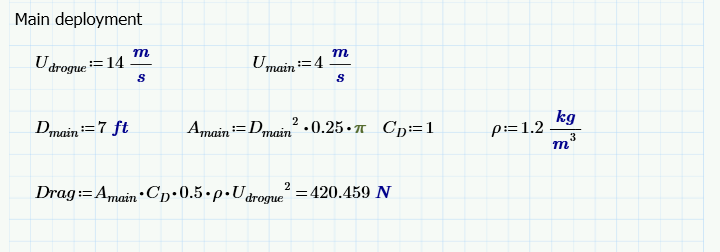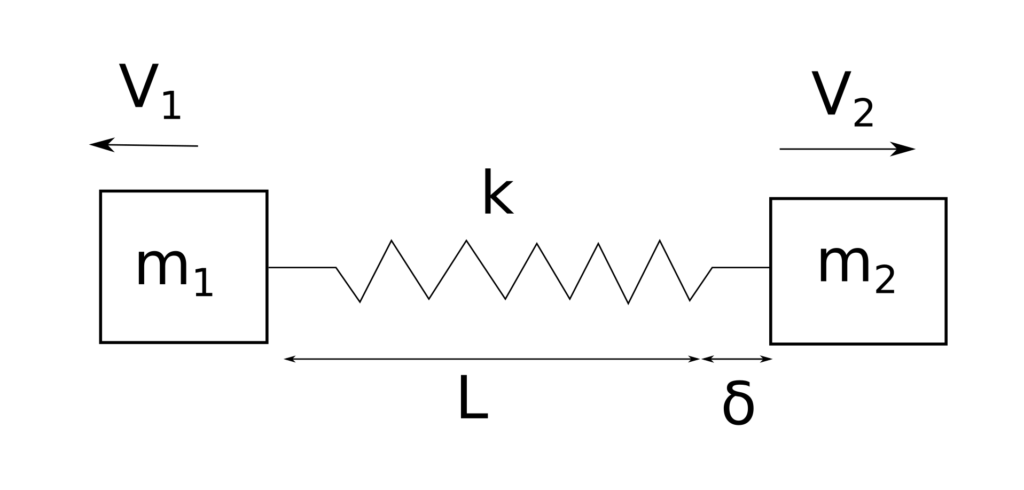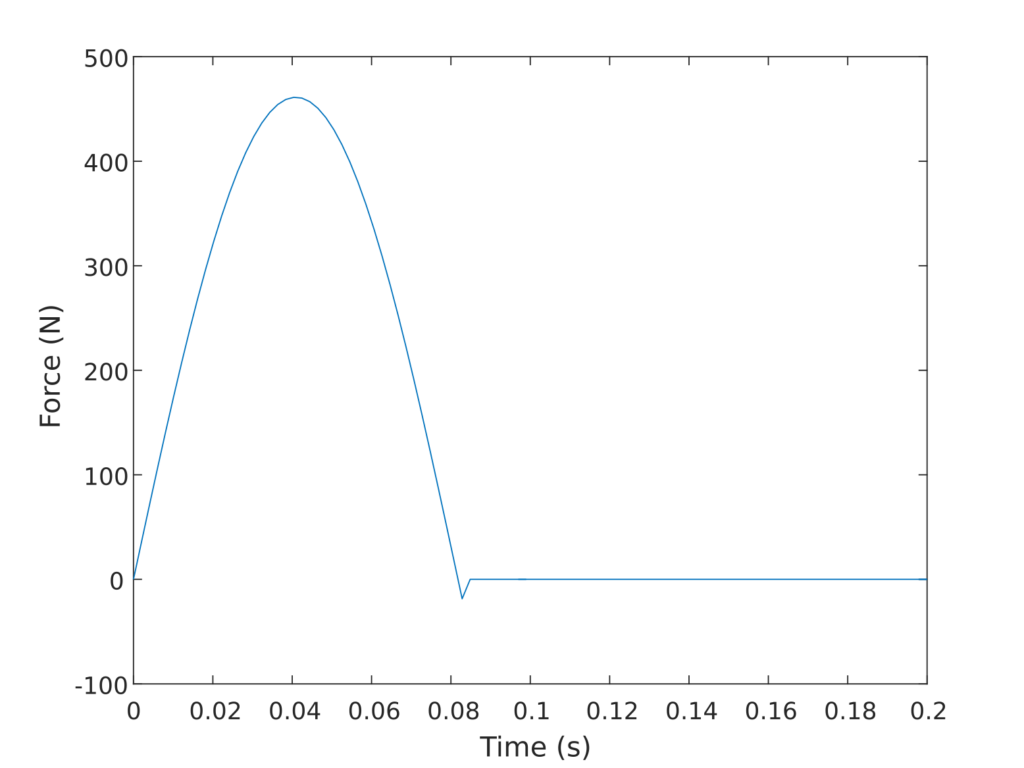When designing the recovery system for a rocket the maximum forces must estimated. There are two main considerations, the deceleration of the separating parts of the rocket as the shock cord goes tight and the deceleration of the rocket as the main parachute deploys (in dual deployment systems). Firstly the separation velocity must be found. This can be calculated if the pressure causing separation and therefore force acting to accelerate the components of the rocket are known using newton’s laws (remembering there are two parts of the rocket being accelerated). Estimating the pressure for standard black powder charges is tricky, there are some approximations to a gas equation around (eg http://www.vernk.com/EjectionChargeSizing.htm). I’d really like to set up a controlled experiment with some BP charges and a pressure sensor.
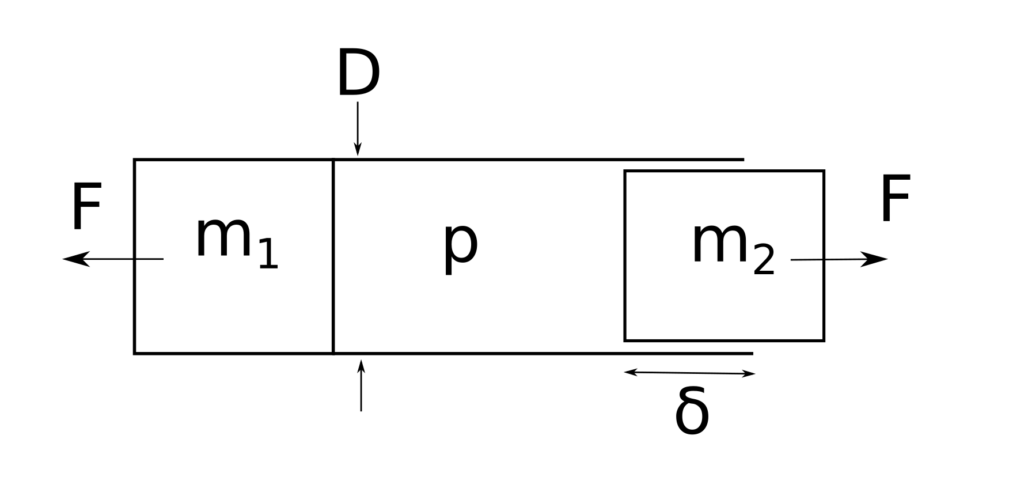
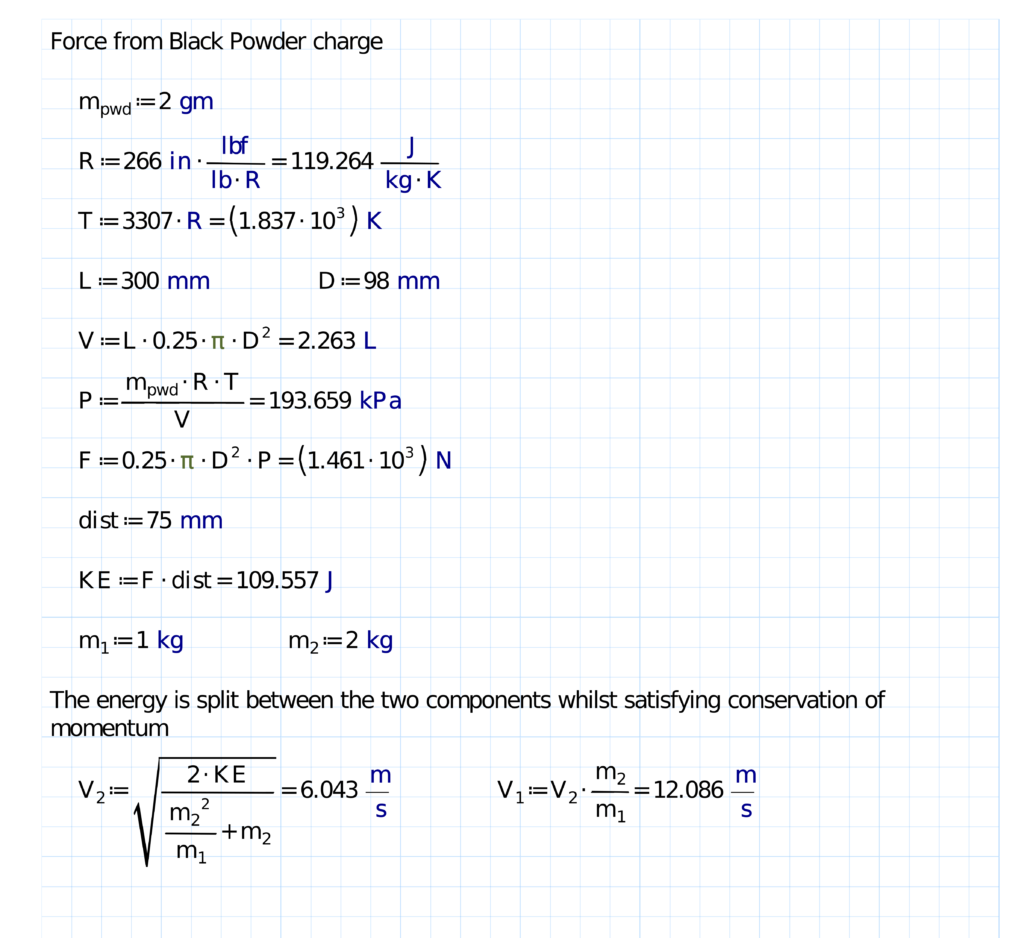 Next consider the deceleration as the shock cord goes tight, this can be model as two mass connected by a spring of stiffness k, length L and extension delta. Using the velocities from the previous calculation and iterating the differential equations using this Matlab script listed below produces the below graph of force against time (should also work in Octave).
Next consider the deceleration as the shock cord goes tight, this can be model as two mass connected by a spring of stiffness k, length L and extension delta. Using the velocities from the previous calculation and iterating the differential equations using this Matlab script listed below produces the below graph of force against time (should also work in Octave).
The graph is for a shock cord 3m long and made of 5mm diameter nylon cord.
The next consideration is when the main deploys, the rocket is descending at the terminal velocity of the drogue. The main then deploys, the velocity is higher than the new terminal velocity therefore the rocket decelerates. The force is simply given by the drag from the main at the terminal velocity of the drogue. 